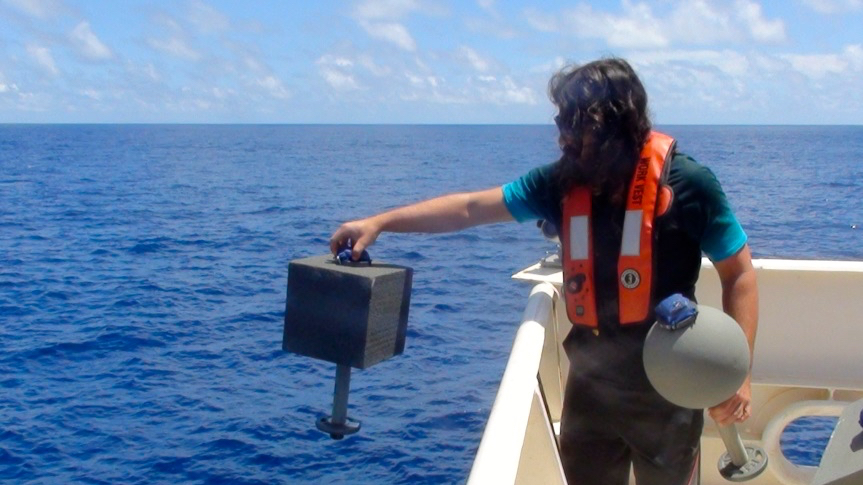MIAMI—A University of Miami (UM) Rosenstiel School of Marine and Atmospheric Science research team have developed a new model to track how objects drift at sea. The new ocean drift model can be used for tracking algae, predicting the locations of wreckage to more effectively cleaning up ocean litter.
Until now, the way researchers model such movements have been largely put together piece by piece and lack a systematic approach. Using satellite data, the group was able to keep tabs on four types of custom buoys as they drifted in the Florida Current for a week.
“Currently there are efforts aimed at cleaning up mostly plastic litter in the ocean,” said study lead author Maria Josefina Olascoaga, an associate professor of ocean sciences at the UM Rosenstiel School. “The success of those efforts would strongly benefit from our work as it provides means for effectively designing cleaning strategies by allowing one to better identify the regions within the great garbage patches where litter congregates.”
Determining how objects move in a flowing fluid has been notoriously difficult. After nearly a century of research, the Maxey-Riley framework was offered in the 1980s for solving the fluid flow equation with moving boundaries and has become a major tool in studying particle motion in fluid dynamics.
Olascoaga and her team are among the first to apply the Maxey-Riley framework to the field of oceanography and see its broad implications for many branches of ocean science.
In December 2017, the researchers released cubical, spherical, plate and mat-shaped specially designed drifters into the waters off Florida, each about one cubic foot large and outfitted with a GPS tracker that pinged satellites every six hours.
The mat-shaped special drifter was designed to mimic the properties of Sargassum, an algae that has been implicated in foul odors, water supply discoloration and metal rusting on the shores of the Caribbean.
The group then focused how several variables affected each buoy’s inertia over time, including radius, shape, buoyancy, and immersion depth. From there, they found that a buoy’s buoyancy had the greatest effect on its trajectory in the ocean.
Olascoaga hopes that the group’s work inspires others to use experimental data to model the world’s oceans. The group hopes to further explore the movements of Sargassum algae.

